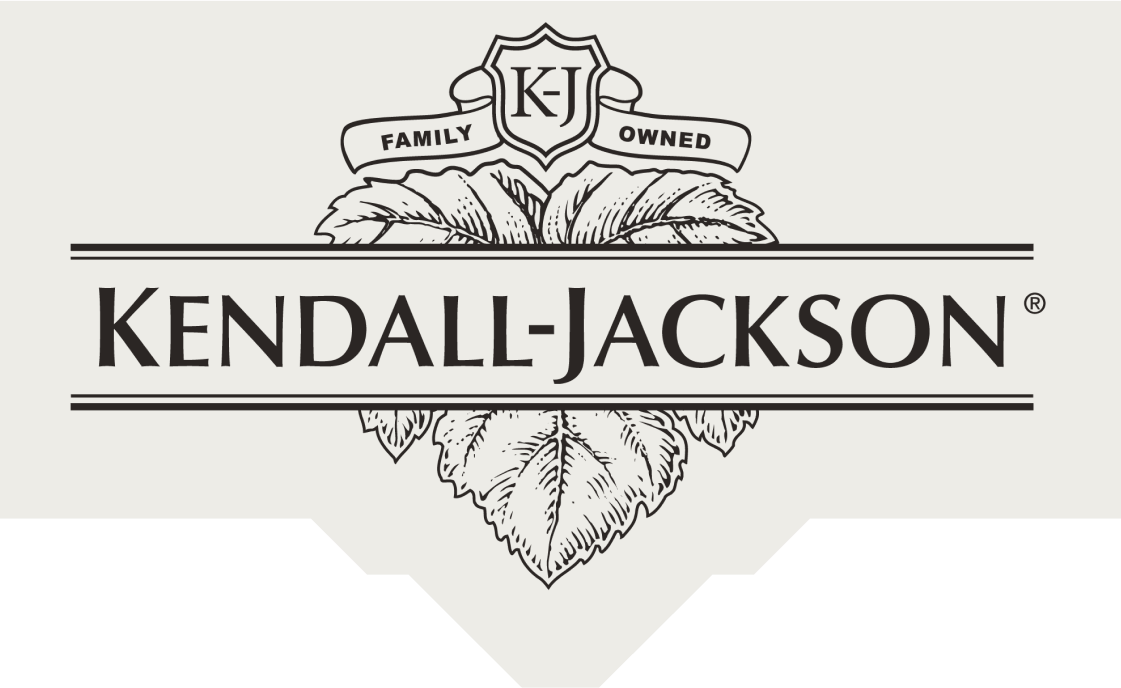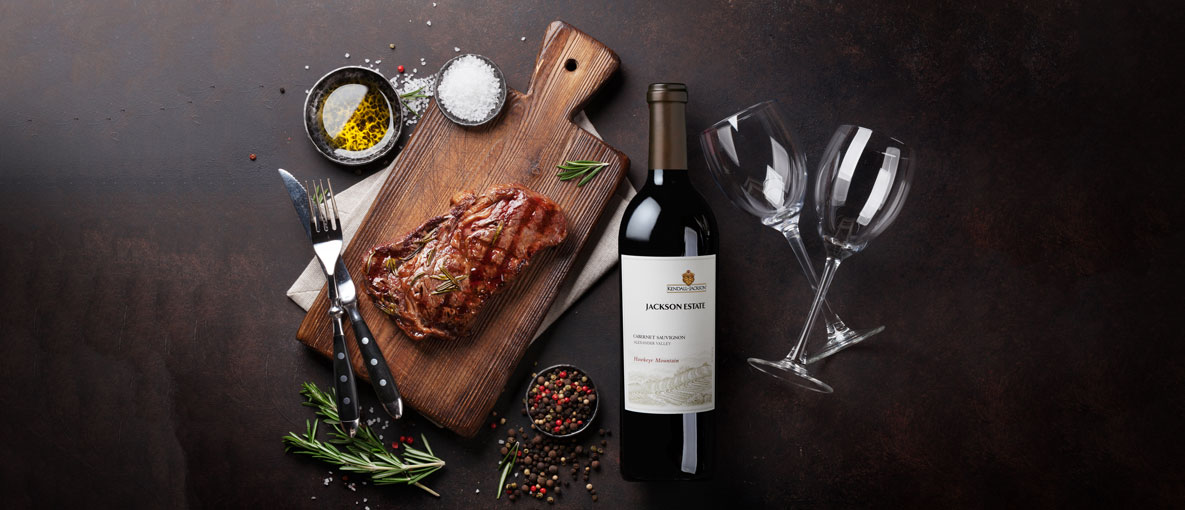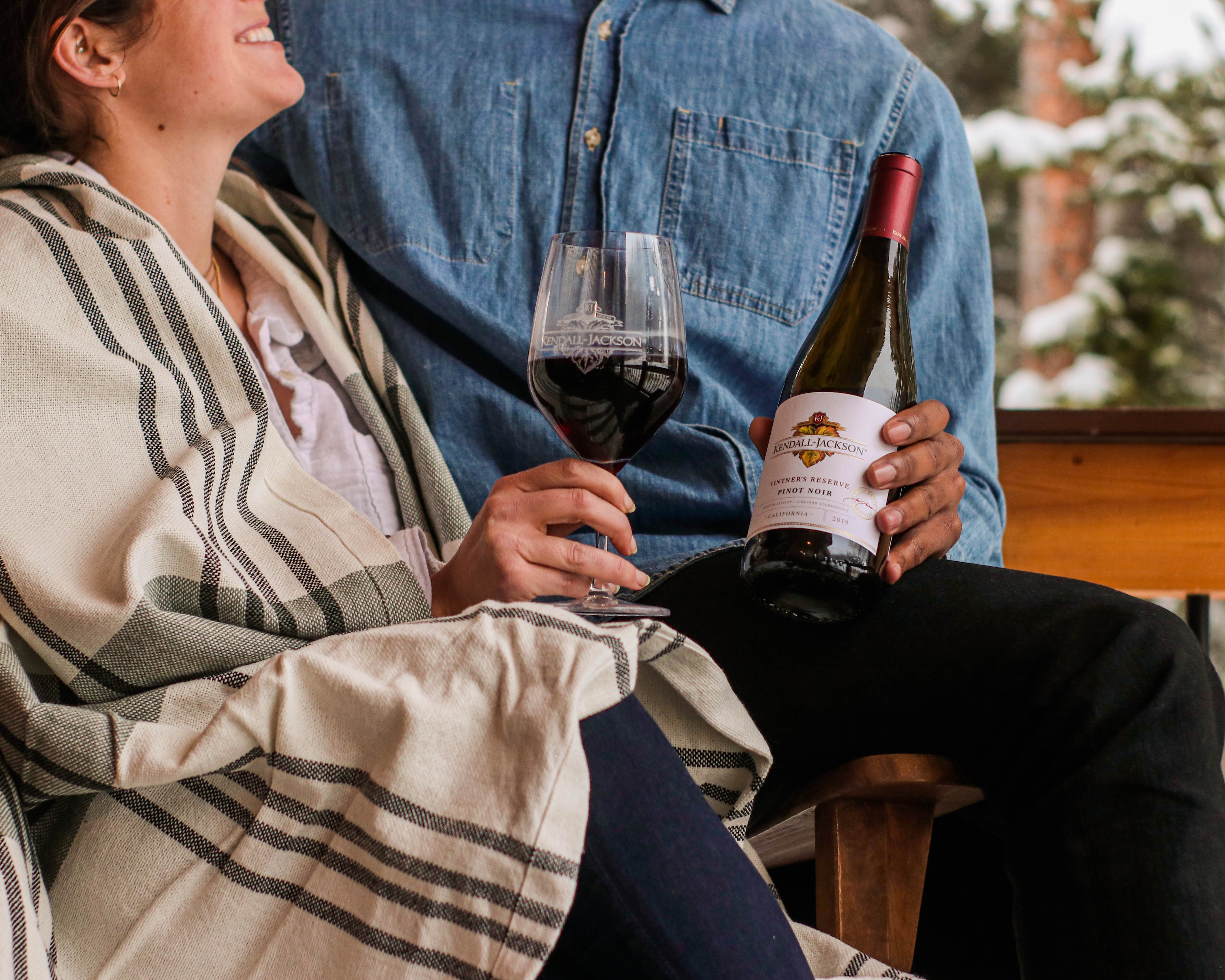The Best Wine Preservation Tools and Systems for Any Budget
The challenge of drinking and enjoying wine before it goes bad has driven women and men to great lengths to prevent its demise since the dawn of fermentation. The Greeks added preservatives, like resin and honey. The Romans experimented with different vessels, preferring large clay pots until the Gauls (the former inhabitants of modern day France) introduced them to oak. Less porous than anfora, qvevri or karas - all heavy clay vessels, the rounded sides of oak barrels and their lower weights helped not only in preserving wines but also in transporting them long distances within the empire. Many centuries on, winemakers in Jerez de la Frontera (aka Xérès or Sherry) in Spain and in Portugal's Duoro Valley and Madeira island began adding distilled grape spirit to fortify wines for safekeeping and long-distance journeys.
Today, we scientifically understand wine's multi-faceted composition such that we know how to vinify it, age it, bottle it and store it in very stable ways. The burning question now is how to keep wine fresh after opening it. There are so many options that determining how to preserve wine after opening with the best wine stoppers can be downright tormenting!
In this blog, we tested all the top rated and best wine preservers on the market to help you decide which one is best for you. But first, let’s look at some commonly asked questions in regards to wine preservation.
The Best Way to Preserve Wine
The best way to preserve an open bottle of wine is a question whose answer is composed of a matrix of temperature, humidity, light, time and personal taste. (It can also depend on origin. Luckily for Kendall-Jackson fans, wines from the "New World", or wines hailing from outside of Europe, tend to be much more robust than certain "Old World" appellations.) There is no perfect answer, but some options are better than others.
So, what is the best way to preserve an open wine? The answer: a good quality wine preservation system. If a trusty wine preserver is one of the best accessories that every wine drinker should own, how do you choose one? Just like with wine aerators, there are all sorts of gadgets claiming they are the best wine savers on the market. Our wine expert Christine Canterbury has spent almost two decades working on how to preserve wine once opened, so she has some strong opinions. Nonetheless, we explored new alternatives for this piece in case something she had not heard about had popped onto the market.
Hot Tip: In addition to exploring the many wine preservation possibilities below, let's also consider that a smart wine preservation strategy starts before you ever open a bottle. That is, it starts with storing wine properly. There's no point in saving opened wine that's wasn't good even before it was opened!
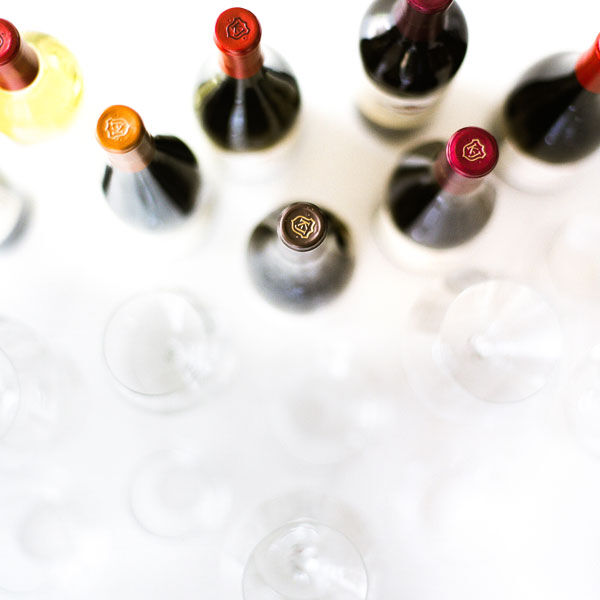
How Long Can I Keep an Opened Bottle of Wine?
As with so many of the frustratingly and delightfully elusive answers in wine, this one, too, is, "It depends!"
These days, we rarely keep wine for more than two or three days based on our personal preferences. However, when Christy was studying wine, she kept them around as long as possible. (This is how many wine lovers first try every possibility under the sun to keep wine fresh after opening lots of bottles.) Based on the combination of your personal tastes and the style of the wine (including the grape variety), most young wines (say, younger than five years from vintage) can be preserved after opening between two days to almost a week.
Hot Tip: The more wine there is left in the bottle, the longer the wine will stay fresh, regardless of how you try to preserve it. This is because the wine to air percentage in the bottle is lower.
Another Hot Tip: Some wines are better on the second day after opening. With the right preservation technique, they can stay fresh while having benefited from oxygen exposure. Young wines don't necessarily like being cooped up or restricted!
By the way, there are other ways to "appreciate" that opened bottle of wine that still may be good enough to drink but that may have evolved beyond your preferred imbibing style. Or, it could be that you know in advance that you won't be able to get back to sip it, so you'd rather use it purposefully than pour it down the drain.
- Freeze the wine in ice cube trays to cook with it in small quantities later
- Use it in a vinegar mother for complex, home-made salad dressings or general cooking
- Cook with it this week
- Freeze it to drink another day or use it as “ice cubes” in your next glass of wine on a hot day.
How Can I Make Opened Wine Last Longer Without Tools?
Yep, this last bullet point above on freezing can work, but only to a certain degree. To avoid disappointment when freezing wine, consider these points:
- Trial this with young, fruit-driven wines, especially those without new oak aging.
- Freeze wine for a few weeks or less for the best results.
- Use this technique with easy-going wines rather than the most complex (and usually more expensive) wines, from which you will likely notice more deterioration in aromas and texture.
If you do freeze a wine and want to thaw it more quickly than just putting it in the fridge or on the counter, rotate the base of the bottle under a stream of tepid to lightly warm water for a minute or two to get it up to drinking temperature. Importantly, once defrosted, it will not refreeze well for drinking purposes.
There are a few other clever ways to make opened wine last longer without tools. Speaking of cooler temperatures, how long can you keep an opened bottle of red wine? Cooler temperatures preserve wine, just like they do food, so always store your leftover red wine in the fridge, just as you would with a white or rosé.
Another option is to buy in the size format that makes the most sense for your usage. (This could even prevent needing wine preservation!) For example, if you are drinking just a bit, K-J bottles many of its Vintner's Reserve wines in a half bottle format, which is 375 ml or about two and a half glasses of wine.
Another nifty option is to decant the remainder of a full bottle (750 ml) into a half bottle, assuming at least half the bottle has been consumed. Take any half bottle you have around, wash it out then allow it to dry thoroughly. Then, decant the remainder of your full bottle into the smaller one. Even if the 375 ml bottle isn't full once the other bottle is tipped in, as the bottle is smaller in circumference, the liquid inside it will have less oxygen contact.
However, ideally, there would be no airspace between the wine and the stopper. It's better to lose a few drops filling a bottle to its rim then seeing some overflow when sticking in a stopper than to lose a lot more because the wine remained exposed to more air than was necessary!
How to Keep Wine Fresh without a Cork
Tossed the cork into the trash that's now at the curb? Can't smash the cork back into the bottle? That is, are you wondering how to store wine after opening without a cork?
To keep opened wine fresh without a cork, it's definitely handy to keep an extra cork or two of different sizes (corks expand differently when drawn out of a bottle neck) to stopper an opened wine bottle before setting the wine in the fridge. That works with any wine bottle closure (except sparkling wines - see the hot tip below), even ones originally closed with a screwcap or glass cap.
Hot Tip: Preserving sparkling wines well is harder than preserving still wines. This is primarily because once opened, sparkling wines begin to lose their bubbles. Also, sparkling wine corks expand once pulled from the bottle and cannot be re-inserted. Never reclose a sparkling wine bottle with a regular cork because the pressure of its bubbles can push it out, potentially causing personal injury or property damage. Instead, preserve sparkling wines by using a stopper with "arms" or a single arm clasp stopper. (FYI, the single arm clasp stopper usually fits a wider range of sparkling bottle openings than does a two-arm stopper.) These special sparkling wine closures will keep your bottle securely closed and will help keep the sparkles from fading completely for a day or two.
While the options above work, there is no question that wine preservation systems can be useful. Unfortunately, preservation tools and prices are all over the map. Furthermore, when we really want something to work, the suspension of disbelief can creep in on our faculties. So, I set out to test the most budget-friendly wine preservations systems I could find against my own, tried and true system.
Choosing a Wine Preservation System
Since Christy began studying wine and needed to open lots of bottles at once, she has always used wine preservation systems in the budget friendly tier. Christy’s go-to is the VacuVin. For a more expensive bottle that you may definitely want to keep in good condition, she recommends using the VacuVin in conjunction with Private Preserve inert gas. If you’re saving a bottle of sparkling wine, Christy likes to spray Private Preserve into the bottle and then seal it with a sparkling wine stopper.
Christy’s trial against her tried-and-true methods were conducted against a few new options in the budget-friendly and mid-range tiers. The budget tier is more manual, whereas the mid-range and high-end tiers tend to involve batteries, recharging cords, replacement needles, extra gas cartridges and electricity connections.
After trialing the current release of Kendall-Jackson Vintner's Reserve Chardonnay and a slightly older Cabernet Sauvignon across four different wine preservation systems, she opted to stick with her VacuVin and Private Preserve while occasionally using the Coravin to check on older or more expensive bottles that you may not be ready to drink in their entirety.
Below I sum up my wine preservation system reviews for my week-long trial as well as the features, pros and cons of some of the most commonly found options.
Budget Friendly Wine Preservation Systems
Vacuvin
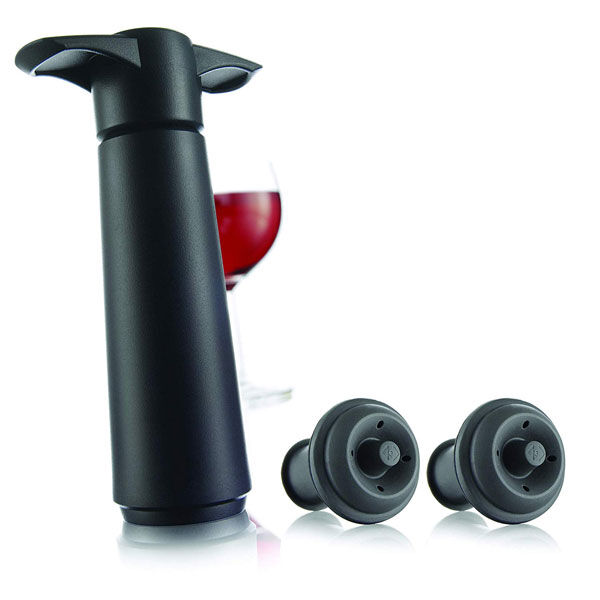
Slip one of VacuVin's rubber stoppers into the neck of any bottle then use its hand pump to suck out air inside the bottle. After about eight to ten pumps, the pump clicks, indicating that the bottle has been vacuumed well, keeping oxygen out of the bottle. I make sure it clicks two to three times then give the stopper a light tug to make sure it is snuggly fitted into the bottle. While high-end, electric vacuum systems may "pull out" aromas, especially on aromatic wines, I have never had such an experience with a VacuVin hand pump.
Pros:
- It's easy.
- It's inexpensive.
- The pump lasts years and years. One of mine is 15 years old!
- It works on any wine bottle, regardless of its original closure.
- You can return the bottles to your wine fridge or place it in your refrigerator on their sides.
Cons:
- The pump system should not be used for sparkling wines.
Results:
This worked the best on both the Chardonnay and the Cabernet Sauvignon, keeping the aromas and palate textures the most similar to the freshly opened wines. I would have happily sipped a glass from these bottles - especially the Chardonnay - at any point during the test period.
REPOUR WINE SAVER
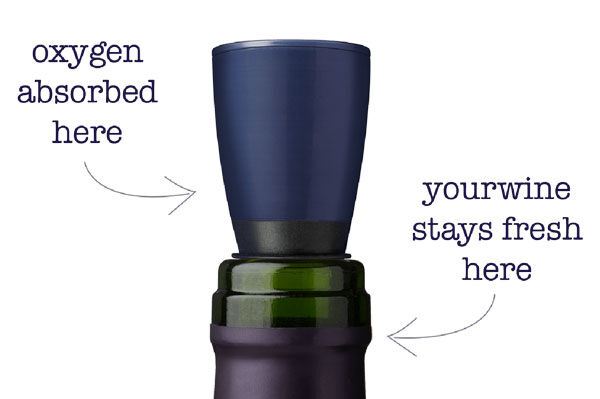
Peel off the foil at the bottom of the Repour Wine Saver and insert it into your opened bottle of still wine. Repour works by absorbing oxygen into the blue stopper. One stopper should preserve one bottle, if the stopper is returned to the bottle immediately after pouring a glass of wine. While the stopper is not in the bottle, it is being exposed to all of the air in the room. This quickly reduces its oxygen absorption once returned to the bottle. Depending on how many times the bottle is reopened and how long it is before the Repour is returned to the bottle neck - especially if it is being reopened more often for smaller glasses, more than one stopper will be needed.
Pros:
- It's incredibly easy.
- It's inexpensive if you can keep a wine fresh with just one stopper.
- It works on most wine bottles, depending on the size of the bottle opening.
Cons:
- This is a one-use stopper, and as up to two stoppers may be needed, this is a lot of single-use plastic.
- As a single-use stopper, repeat purchasing is required.
- Restoppered wine bottles cannot be restored on their sides.
- This should not be used for sparkling wines as the CO2 pressure can cause the stopper to push out of the bottle. Potential good news: Repour is working on a sparkling wine version with "arms".
Results:
- The Repour gave the most difficult to decipher results as I used only one stopper. On the second and third days, both the white and the red seemed to emphasize oak tones over fruit aromas, which flattened quickly. The structure of the Cabernet seemed more pronounced than the VacuVin version on the second and third days then fell off a cliff on Day 4. While the Chardonay structure was similar to the VacuVin version on Day 2, by Day 3, it had started to soften. I wouldn't have wanted to drink either wine after Day 3, even if the Chardonnay did hold better than the Cabernet in the end.
Private Preserve and Vineyard Fresh
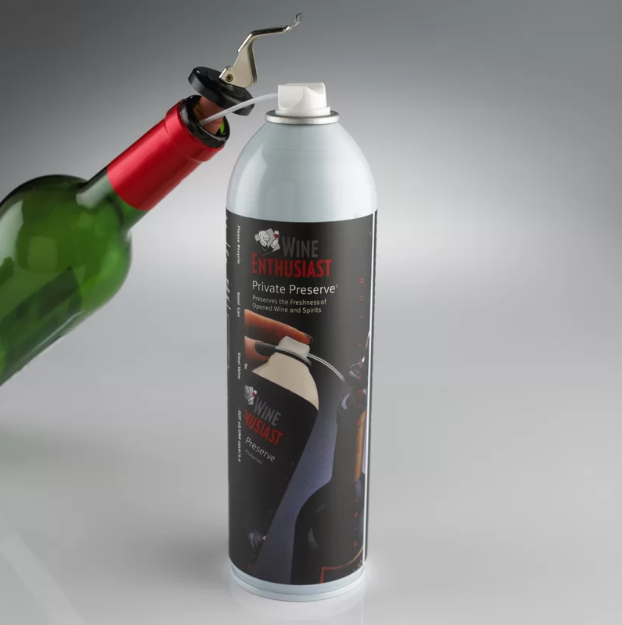
Private Preserve and Vineyard Fresh are cans of inert gases that weigh more than oxygen. Private Preserve is a combination of Argon, CO2 and Nitrogen, and Vineyard Fresh is 100% Argon. When sprayed into a wine bottle, these inert gases push oxygen out and mostly do not interact negatively with wine. Simply spray the inert gas (one, one-second spray followed by four shorter bursts for Private Preserve and two short bursts for Vineyard Fresh - I usually add an extra spray or two if the bottle level is low) into to the bottle and recork the wine.
This duo is actually a cross between the budget-friendly and mid-range systems with Private Preserve falling in the budget category and the much more expensive Vineyard Fresh being a mid-range option. If you are storing your bottles for one to several weeks, Vineyard Fresh is the better option. If your wine storage periods are shorter, Private Preserve does a good job at a gentler price.
Pros:
- It's easy.
- It works on all wine bottles.
- It can be used for sparkling wines.
- Private Preserve is inexpensive.
- Vineyard Fresh comes in a handy travel size!
Cons:
- The bottle reseal must be tight for best results. This works best when paired with a VacuVin.
- It is possible for added CO2 to dissolve in wines, but all wines naturally have some dissolved carbon dioxide left over from their fermentations. The effect of additional dissolved CO2 can give white wines accentuated freshness, but it could emphasize the tannin-acid duo in red wines. In very structured reds, this could be could unpleasant. However, the risk of an adverse effect is low for most wines, especially those stored for short time periods. In my experience, the cost-to-effectiveness ratio is overwhelmingly advantageous for Private Preserve.
- Vineyard Fresh is rather expensive.
Mid-Range Wine Preservation Systems
Mumba Wine Vacuum Sealer
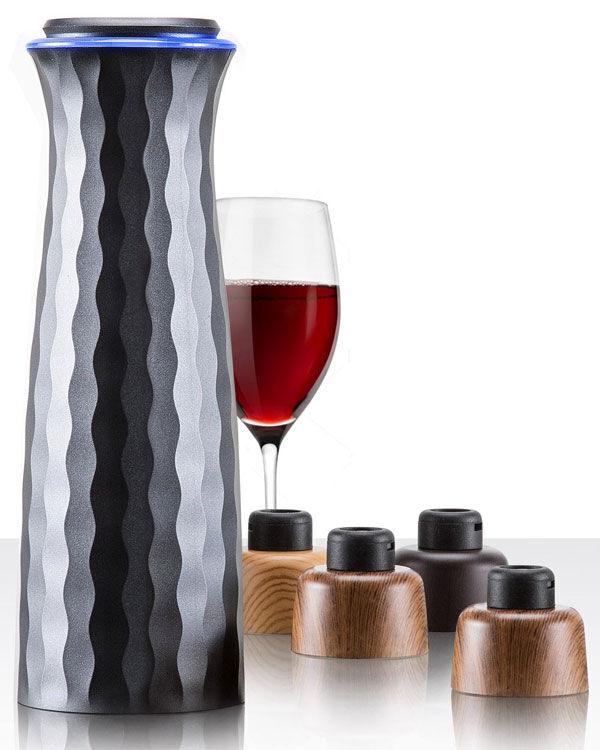
This is a fun option for those that like gadgets! This vacuum unit comes with four attractive, faux wood-and-rubber stoppers. In principle, it works like a VacuVin but without requiring the light muscle power. Interestingly, the Mumba vacuum is so vigorous that it turns the bottle slightly while pulling out air. (FYI, the Rabbit Electric Preserver and Wine Enthusiast Opener and Preserver seem to work similarly, but I did not trial them.)
Pros:
- It's fairly easy.
- It's relatively inexpensive.
- It works on all wine bottles.
- The four stoppers allow more than one bottle at a time to be preserved.
- The unit flashes blue as it pumps out air then stops automatically. It flashes red when it needs a recharge.
- It's hands-free. Just set the unit on the stopper-covered bottle and let the vacuum do all the work.
- The lithium battery should last long enough to seal over 100 bottles.
Cons:
- It takes up to a minute for the vacuum unit to create a seal.
- This unit may scalp some fruit aromas. See my findings below.
- It should not be used on sparkling wines.
- The unit requires recharging.
Results:
- If VacuVin didn't exist, I'd consider buying a Mumba. I would have drunk a glass of either wine through Day 4. Interestingly, the Mumba kept the Cabernet Sauvignon aromas and structure fresher than the Chardonnay's through the end of the experiment. However, with both wines, the aromas changed to a more floral and mineral style while the VacuVin wines remained more fruit-driven.
SAVINO
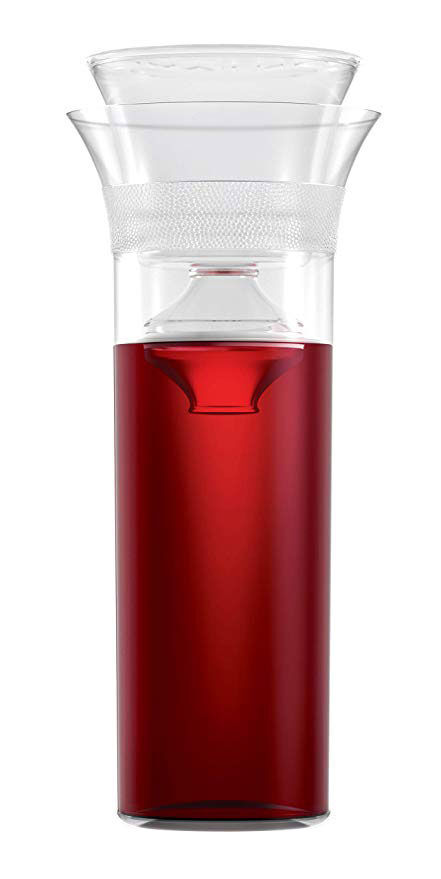
I trialed the Outdoor/Plastic Wine Saving Carafe. There is a glass Savino as well. The plastic decanter provides zero defense against oxygen as it does not have an airtight seal, and I can see no reason that the glass version would work any better. The "float" that is supposed to provide a physical barrier allows plenty of oxygen ingress. The plastic version is convenient for taking a bottle of wine places where glass is not allowed, but so is a Swell bottle (which also naturally keeps the wine cool).
Pros:
- It works on for any still wine.
- It's relatively inexpensive.
- It seals well for transportation.
Cons:
- Two days is the maximum preservation utility - whether in the fridge or on the counter, which is as good as putting a cork back in a bottle.
- The lid isn't easy to unscrew to pour.
Results:
- Both wines turned quickly. I wouldn't have drunk a glass of either after Day 2. The aromas and palate feel went flat quickly with the Cabernet smelling strongly like balsamic vinegar by Day 3. I do not recommend this for wine preservation for more than two days.
Higher-End Personal & Commercial Wine Preservation Systems
There is a host of snazzy wine preservation systems that can be found in wine stores and wine bars. These commercial wine preservation systems are revolutionary when you want a large number of wines at your disposal, assuming the wines and machines are properly maintained. This category's price point starts at several hundred dollars and quickly rachets up to well over $1,000.
EuroCave Wine Bar and EuroCave Wine Art
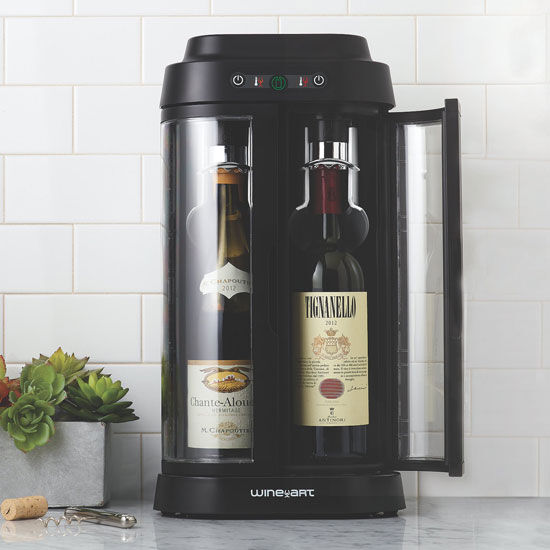
These are scaled-down versions of commercial wine preservers that are more suitable for home use. Each stores the bottles in a special machine that vacuums out unwanted air.
Pros:
- They generally claim to preserve opened wine for about ten days.
- These allow different colors of wine to be stored at their proper temperatures at the same time.
- Wines can be removed for service, for example to show guests the label of the wine you have poured.
- There are no gas cartridges to change.
- The Wine Bar version is scalable, offering the possibility to store more wines.
Cons:
- These are expensive.
- The machines' slots limit the number of wines that can be accessed and preserved at the same time.
- Wines must be removed for service, so there is more oxygen exposure than in systems that also dispense wine.
- They also take up a considerable amount of space, so are not ideal for city living.
- These EuroCave options do not work with sparkling wines.
PLUM
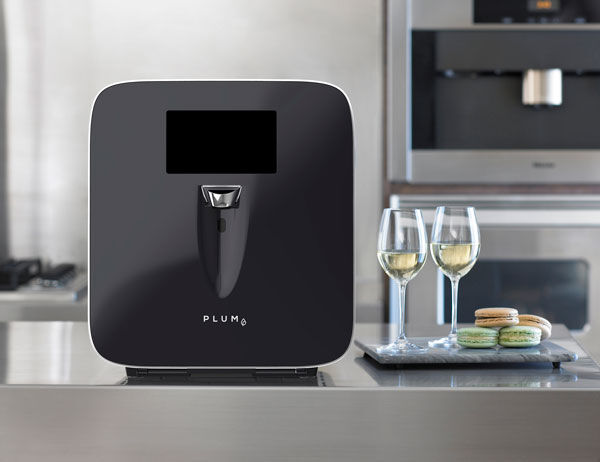
The Plum system opens, serves and preserves your wine selections. Its needle goes through capsules and corks of any kind (including synthetic corks) as well as screwcaps.
Pros:
- It has a super sleek, modern design.
- It works with corks and screw caps.
- Plum allows different wines to be stored at their proper temperatures at the same time, regardless the color.
- The built-in camera and software identify wines labels and post them on the LED screen.
- The Argon canisters have a large capacity, working with up to 150 wine bottles.
- A standard, five-ounce serving takes only 12 seconds to pour.
- Serving sizes can be customized.
Cons:
- It's expensive.
- Only two wines can be accessed and preserved at the same time.
- Argon canisters must be reordered.
- This is the largest countertop system discussed in this piece by good measure.
Bermar's Verre de Vin
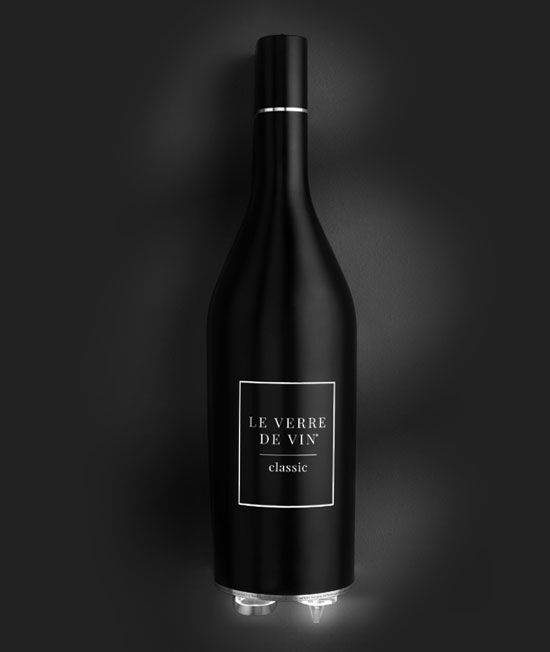
Bermar's vacuum system allows for an unlimited number of wines to be preserved after opening and, uniquely, keeps sparkling wines fresh, too.
Pros:
- It comes in a number of formats. The smallest are nicely space sensitive.
- There is no limit to the number of wines that the system can preserve.
- It can be used with sparkling wines.
- The reseal process is quick, lasting only a few seconds.
- No cartridge changes or reorders are required.
Cons:
- It's expensive.
- While the reseal process is quick, only 15 bottles can be resealed within five minutes.
- Electrical power is required.
Results:
- Of the large footprint high-end systems, Verre de Vin is the only one that I have used on a regular basis (in a New York City wine bar). I found it very efficient and effective with bottles that were at last half full typically lasting well for two to three weeks.
Wine Keeper
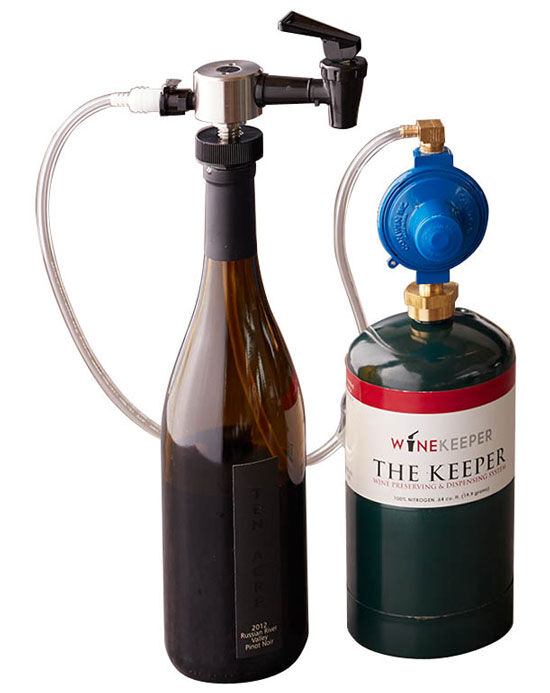
Wine Keeper makes larger wine preservation systems similar to the category above. It also makes a less expensive version that is composed of a can inert gas, a tube and dispenser spout. Each system works only on one bottle of wine. This might be a good option for a large format wine, and the stopper faucet can fit in a magnum bottle (which holds two, 750 ml bottles of wine) neck. Additional stopper faucets can be purchased and used with the same gas canister, but they are almost as expensive as a stopper faucet purchased with a Nitrogen gas canister.
Additionally, while the wine in the bottle should be preserved well, any wine lingering in the spigot will oxidize. So, the first half ounce of wine likely needs to be discarded when the unit has not been used very recently. The Nitrogen option is larger and works for 15-20 bottles of wine. The Argon option is smaller and works for up to 15 wine bottles.
Pros:
- It's expensive but less expensive than other dedicated wine preserver systems.
- It claims to preserve a single wine bottle for one to three weeks.
- Two dispensing units are offered: less expensive plastic or more expensive stainless steel.
- The canisters can be used with more than one bottle.
Cons:
- It's not visually fetching.
- It attaches to only one wine bottle at a time.
- Gas cartridge reordering required.
- The spigot must be sparged, leading to modest waste.
- Nitrogen units require additional, hefty fees for HAZMAT shipping.
- This should not be used on sparkling wines as these wines foam inside the tubing.
Coravin

The Coravin is another high-end wine preservation system that I have had at home for years. Mind-bogglingly, Coravin is not about opening the bottle, at least not for cork closed wine bottles. It's about siphoning wine out of the bottle through the cork with a needle to preserve the rest of the wine bottle more or less in its original state for another time.
The Coravin was originally designed to work with natural and technical wine corks. Depending on how those bottles are "accessed", they can last for months to years. Now, Coravin can preserve screwcapped wine bottles, too. Coravin's accessory caps replace a bottle's original screwcap (these must be swapped quickly) then can be used for up to 50 punctures, or about 10 bottles of wine. The Coravin screwcap accessory allows open bottles to be preserved for up to three months.
Hot Tip: Rinse the Coravin with warm water after every use to ensure that no old wine blocks the needle. This also ensures that no old wine that has oxidized in the needle will affect the next bottle of wine that is Coravined. (Yes, Coravin is now used as more than a noun!) The needle should then be sparged, or "cleaned", with a quick pump of the handheld system's inert gases to clear water out of the needle.
Another Hot Tip: Before Coravining a wine, sparge the needle with a quick pump on the lever to remove any oxygen in the system before inserting the needle into the cork to extract wine.
Pros:
- If you want to enjoy just a glass of one or two, there's no easier way than to Coravin wine.
- Using a Coravin allows you to assess how age-worthy bottles are drinking without opening the entire bottle. If a wine is still too young, you've saved it for later. If it's in its drinking prime, it won't go downhill before you pop it open.
- There is no limit on the number of bottles you can access.
- Coravin's compact format that is easy to store and transport offers the ultimate flexibility in the luxury wine storage range.
Cons:
- Coravin is expensive.
- This does not work on sparkling wines.
- Older bottles should be opened only when zipped into the neoprene Coravin sleeve in case the bottle's glass is weaker or has been damaged over the years. In fact, Coravin suggests that every bottle should be opened with the sleeve.
- If not cleaned properly and primed, the Coravin needle can introduce oxidized wine or oxygen into an unopened bottle.
- Cartridges must be changed frequently.
- The needles pour slowly. It takes 25-29 seconds to pour a standard five-ounce glass. Faster Pouring Needles - the ones used in restaurants - are 20% faster but still take 19-25 seconds. The thinner Vintage Needle made for use on delicate, old corks takes 53-57 seconds.
Final Thoughts On Keeping Your Wine Fresh
There are oodles of options to help keep wine fresh when you've not finished a bottle. Based on Christy’s prior usage and current, near-exhaustive research, she is staying faithful to the VacuVin with occasional bursts of Private Preserve spray.
What works best for you will depend on budget, desired length of time to preserve the wine, how much wine is left in the bottle (and the size of that bottle), how much counter space you can spare, how often you're really going to use a wine preservation system and your tolerance for gadgets and replacements. There's only one item on this list that Christy would actively dissuade anyone from using for more than two days, and that is the Savino.
Of course, you also can just stick the cork back in the bottle and put it in the fridge. Better yet, invite some friends over to help finish it off or gift the remaining bottle to a friendly neighbor. Cheers!
Christy Canterbury is a Master of Wine, journalist, speaker and judge based in New York City. In 2014, she was short-listed for the Roederer Online Wine Communicator of the Year Award. Her work has been published in Decanter, Wine Enthusiast, Edible Green Mountains, Wine Searcher, Food Arts, Snooth, Beverage Media, TimAtkin.com, Civiltà del Bere, Wine Business Monthly, TASTED, Selectus Wines and in other outlets.
Frequently Asked Questions
What is the best way to preserve an open bottle of wine?
The best way to preserve an open bottle of wine depends on several factors including temperature, humidity, light exposure, time, and personal taste preferences. A good quality wine preservation system is often recommended as it helps to minimize the wine's exposure to oxygen, which is the primary factor that causes wine to deteriorate after opening. Vacuum pumps, inert gas systems, and specialty stoppers are popular choices. Ultimately, the choice depends on how long you intend to preserve the wine and your budget.
How long can I keep an opened bottle of wine?
The duration for which you can keep an opened bottle of wine varies based on the wine's type, age, and how well it's preserved. Generally, younger wines (less than five years old) can last between two days to almost a week if preserved properly. Reducing oxygen exposure by using preservation systems or storing in the fridge can extend the wine's drinkability.
How can I make opened wine last longer without tools?
If you don't have specialized wine preservation tools, there are a few techniques to extend the life of opened wine. Storing it in the refrigerator slows down oxidation, especially for red wines which can benefit from cooler temperatures. Freezing small amounts in ice cube trays is another option for cooking or refreshing wine later. However, these methods are best suited for simple, fruit-driven wines rather than complex or aged varieties.
Can wine preservation systems affect the taste of wine?
Wine preservation systems can influence the taste of wine, especially if they involve vacuum pumps or inert gas. Vacuum systems may alter aromas slightly by reducing volatile compounds, while inert gas systems like Private Preserve or Vineyard Fresh aim to displace oxygen without affecting wine flavors. However, some sensitive wines, particularly those with delicate aromatics, may show minor changes after preservation, depending on the system used.
Are there any risks involved in using wine preservation systems?
While wine preservation systems are generally safe to use, there are a few considerations. Improper sealing or using incorrect stoppers can lead to increased oxygen exposure, negating the system's effectiveness. Some systems, especially those using gas cartridges, require proper handling to avoid leaks or accidental discharge. It's essential to follow manufacturer instructions and use compatible accessories to ensure optimal preservation and safety.
Can wine preservation systems be used for sparkling wines?
Preserving sparkling wines presents unique challenges due to their carbonation. Regular wine stoppers are inadequate as they can be pushed out by internal pressure, risking injury. Specialized stoppers designed for sparkling wines, such as those with clasps or arms, are necessary to maintain carbonation and preserve fizziness. Inert gas systems that displace oxygen without affecting bubbles are also suitable for preserving sparkling wines for short periods.
How should I store wine bottles after using a preservation system?
After using a wine preservation system, it's essential to store the bottles properly to maintain freshness. Store opened bottles upright in a cool, dark place away from direct sunlight and temperature fluctuations. Refrigeration is ideal for preserving white and rosé wines, while red wines can be stored in a cool room temperature environment. Avoid placing preserved bottles on their sides as it increases oxygen exposure through the cork or stopper.
